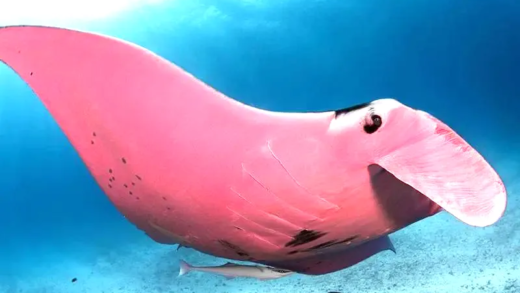Turtle shells are complex structures made primarily of keratin and bone, offering protection and flexibility. Turtles grow through a process influenced by species and environment. While shells don’t expand like balloons, they grow gradually. Damage can lead to serious health issues, and movement is facilitated by retracting limbs. Misconceptions about turtle shells often mislead enthusiasts, emphasizing the need for accurate information regarding growth patterns among different species.
Turtle Shell Composition: What’s It Made Of?
Turtle shell composition is fascinating. The shell is primarily made of keratin, which is the same protein found in human hair and nails. This makes the turtle’s shell both strong and flexible. The outer layer, known as the scutes, is made of hard keratin plates that provide protection. Beneath this, the shell consists of bony structures that are fused with the turtle’s ribcage and spine, creating a solid protective barrier.
Additionally, the shell contains layers of bone called osteoderms. These contribute to the overall durability of the shell, ensuring that it can withstand physical impacts and predatory attacks. The unique structure allows turtles to retract into their shells for safety, making it a critical evolutionary adaptation.
In summary, the turtle shell is a complex structure composed of keratin and bony elements, providing both protection and flexibility, essential for the survival of turtles in various environments.
How Do Turtles Grow? The Growth Process Explained.
Understanding how turtles grow is crucial for appreciating their life cycle. Turtles grow through a process called accretion, where the shell gradually increases in size over time. This growth is influenced by factors such as diet, habitat, and species type.
Young turtles grow rapidly, particularly in their first few years, due to the availability of nutrients and favorable conditions. As they age, their growth rate slows down significantly. Interestingly, turtles do not grow continuously; they experience growth spurts, often correlating with seasonal changes in their environment.
Moreover, the growth of a turtle’s shell is not uniform across all species. For example, some aquatic turtles may grow differently than terrestrial turtles. This variability is important for their adaptation to different habitats. In conclusion, turtle growth is a fascinating process influenced by numerous factors, leading to the unique sizes and shapes observed in various turtle species.
Can Turtle Shells Expand? The Truth Behind Shell Growth.
Can turtle shells expand? The answer is both yes and no. While a turtle’s shell does not expand like a balloon, it can grow in size as the turtle matures. This growth is a slow process, and it occurs at specific intervals rather than continuously.
As turtles age, their shells may develop new layers of keratin, which add to the shell’s size. However, if a turtle grows too large for its shell, it cannot simply expand it. Instead, the turtle might face health issues, as a cramped shell can lead to stress and difficulties in movement.
In summary, turtle shells do not expand in the traditional sense, but they do grow gradually as the turtle matures. It’s essential for turtle owners and enthusiasts to understand these growth patterns to ensure the well-being of these remarkable creatures.
What Happens When a Turtle Grows Too Large for Its Shell?
When turtles grow too large for their shells, serious issues arise. A turtle’s shell is a fixed structure; it cannot stretch like skin. If a turtle continues to grow while confined to a too-small shell, it can lead to health problems. Here are some potential consequences:
- Stress: A cramped shell can cause significant stress for the turtle, impacting its overall health.
- Movement Difficulties: Limited space may hinder the turtle’s ability to move freely, affecting its mobility.
- Increased Risk of Injury: A turtle that cannot retreat properly into its shell is more vulnerable to predators.
In extreme cases, if a turtle grows significantly larger than its shell, it might experience deformities. This situation can result from inadequate diet or poor living conditions. It’s crucial for turtle owners to monitor their pets’ growth and provide appropriate habitats to prevent such occurrences.
Types of Turtles and Their Shell Growth Patterns
Different types of turtles exhibit unique shell growth patterns. The rate and method of shell growth can vary significantly among species. For example:
- Aquatic Turtles: These turtles, such as the painted turtle, typically grow faster in their early years and may reach maturity in 5 to 10 years.
- Land Turtles: Tortoises, like the Galápagos tortoise, have slower growth rates and may take decades to reach full size.
- Box Turtles: These turtles also grow at a moderate pace and can live for over 50 years, with their shells becoming more robust over time.
Environmental factors such as diet and habitat play significant roles in shell growth. Turtles that receive a balanced diet rich in calcium and nutrients tend to have healthier shell development. Understanding these differences helps in providing proper care for each species.
How Does a Turtle’s Shell Protect It from Predators?
A turtle’s shell serves as a vital defense mechanism against predators. The hard outer layer, composed of keratin and bone, acts as a shield. Here’s how it provides protection:
- Physical Barrier: The shell physically blocks predators from accessing the turtle’s soft body.
- Retraction Ability: Turtles can retract their heads and limbs into their shells, minimizing exposure during threats.
- Camouflage: Many turtles have shells that blend into their surroundings, helping them avoid detection.
This protective mechanism is crucial for survival in the wild, allowing turtles to evade predators and thrive in their environments. The evolution of the turtle shell is a remarkable example of adaptation.
Can a Turtle’s Shell Be Damaged? What Happens Next?
Turtle shell damage can occur due to various factors, including predators, environmental hazards, and accidents. A turtle’s shell is a vital protective structure; however, it is not indestructible. Common causes of shell damage include:
- Predator Attacks: Animals like raccoons or dogs may bite or scratch at a turtle’s shell, leading to cracks or punctures.
- Environmental Factors: Sharp rocks, heavy vegetation, or debris can cause scratches or deeper cuts.
- Accidental Injuries: Turtles may get hit by vehicles or other objects, resulting in significant damage.
When a turtle’s shell is damaged, several consequences may arise. Minor scratches might heal naturally, but deeper cracks can lead to serious health issues. For instance:
- Infection Risk: Open wounds can become infected, posing a severe threat to the turtle’s health.
- Structural Weakness: A compromised shell may not provide adequate protection from predators.
- Increased Stress: Pain or discomfort from shell damage can lead to stress, affecting the turtle’s behavior and feeding.
Immediate veterinary care is essential when a turtle suffers shell damage. Treatment may involve cleaning the wound, applying antibiotics, and monitoring the turtle’s recovery. Proper care can help prevent long-term complications.
How Do Turtles Move in Their Shells?
Turtles are unique creatures, and their movement while in their shells might seem limited, but they have adapted well. A turtle’s shell is not just a protective barrier; it also plays a role in their mobility. Here’s how they manage to move:
- Limbs and Head Retraction: Turtles can retract their limbs and head into their shells for safety. When they feel secure, they extend their limbs to walk or swim.
- Swimming Mechanism: Aquatic turtles use their flippers to propel themselves through water. The shell remains streamlined, aiding in efficient movement.
- Walking on Land: Terrestrial turtles use their strong legs to walk, and their shells provide stability. They can also use their shells as leverage to push against the ground.
Interestingly, a turtle’s shell can slightly move during certain activities, allowing for more flexibility. The connection between the shell and the turtle’s body is designed to support movement while providing protection. This unique adaptation is crucial for their survival in various environments.
Common Misconceptions About Turtle Shells
Misinformation about turtle shells is widespread, leading to various misconceptions. Understanding the truth can help promote better care for these remarkable animals. Some common myths include:
- “Turtles Can Leave Their Shells”: This is false. A turtle’s shell is part of its skeleton, and they cannot detach from it.
- “All Turtles Have the Same Shell”: Different species have unique shell shapes and sizes, reflecting their habitats and lifestyles.
- “A Turtle’s Shell Grows Like a Balloon”: While shells do grow, they don’t expand like balloons. Growth occurs gradually through accretion.
Understanding these misconceptions is vital for turtle enthusiasts and caretakers. By debunking myths, we can foster a more accurate appreciation for turtles and their fascinating biology.
Do All Turtles Have the Same Shell Growth Patterns?
No, not all turtles exhibit the same shell growth patterns. Each species has its unique characteristics influenced by environmental factors and biological differences. For example:
- Growth Rate Variations: Some turtles, like the softshell turtle, may grow rapidly in their early years, while tortoises tend to grow more slowly over decades.
- Shell Shape Differences: Aquatic turtles often have flatter shells for swimming, whereas land turtles have more domed shells for protection against predators.
- Dietary Influence: Turtles that consume a calcium-rich diet tend to have healthier, more robust shells compared to those with inadequate nutrition.
Understanding these growth patterns is crucial for proper care. Each turtle species requires specific habitats and diets to thrive, making it essential for owners and enthusiasts to research and provide appropriate care.





Comments are closed.